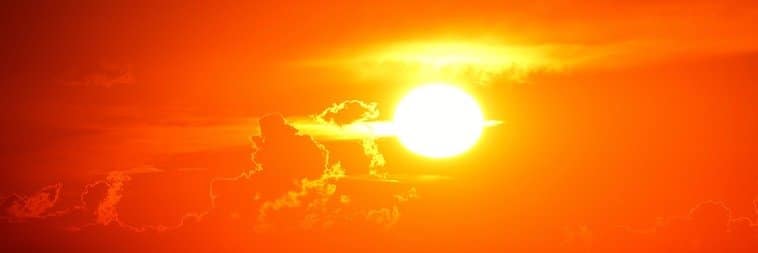Solar Cycle 25 Begins

Our Sun changes every eleven years or so. This change is called a solar cycle. NASA says that a new cycle has begun. Read on to learn more about this new solar cycle.
Our Sun, made from large parts of hydrogen and small amounts of helium, is a giant sphere of hot gases. As the gases churn and create the energy, they send out solar flares into the universe. Scientists track these flares and spots that appear on the Sun in a series of cycles. Cycles last an average of eleven years. Some cycles are very busy with numerous solar flares and sun sports. However, some cycles are quiet, with very little activity. Cycles are tracked from one minimum to the next. NASA recently announced the start of Solar Cycle 25. What do they expect to happen during this cycle?
Solar Cycle 25
According to NASA solar cycle, 25 began in December 2019. It took them some time to determine this because they needed to measure activity. Over the last nine months, the movement has started to increase, indicating the end of Solar Cycle 24. Solar Cycle 24 was recorded as the fourth weakest since record-keeping began in 1755. It had far fewer sunspots at 114, rather than an average of 179.
In addition, to tracking the sunspots, scientists look for a north-south polar flip. In the last cycle, the Northern Hemisphere led peaking over two years ahead of the Southern Hemisphere sunspot peak. This resulted in a solar maximum having fewer sunspots.
If one hopes for a stronger solar cycle 25, they will be sad to learn that scientists predict another weak cycle. They figure that the peak of the cycle will occur in July 2025 with 115 sunspots.
“How quickly solar activity rises is an indicator of how strong the solar cycle will be,” said Doug Biesecker, Ph.D., panel co-chair and a solar physicist at NOAA’s Space Weather Prediction Center. “Although we’ve seen a steady increase in sunspot activity this year, it is slow.”
Magnetic Field
Scientists don’t look only at sunspots. They have to also look at the Sun’s magnetic field. The magnetic field drives solar activity. Unfortunately, scientists don’t completely understand how the magnetic field moves. Therefore, they have to make some assumptions.
The Solar Cycle Prediction Panel forecasts the number of sunspots expected for solar maximum. In addition, it calculates the timing of the peak and minimum solar activity levels for the cycle. It comprises scientists representing NOAA, NASA, the International Space Environment Services, and other U.S. and international scientists.
Our Sun and The Earth
Nothing else in the universe impacts Earth more than the Sun. Without the Sun’s heat and light, Earth would remain a ball of lifeless rock. In addition to light and heat, it warms our oceans, creates weather patterns, and gives energy for plants.
Scientists believe that Solar Cycle 25 will break a 40-year weakening of the magnetic field at the Sun’s Poles. The last time this weakening occurred, causing a minimum, it lasted for centuries. The minimum, known as the Maunder minimum, happened in the middle of what’s known as the Little Ice Age from the 13th to 19th centuries.
For now, scientists can only offer speculation as to what will happen over the next 11 years with our Sun. As with most things, only time will tell how this new cycle will play out in the coming years.
